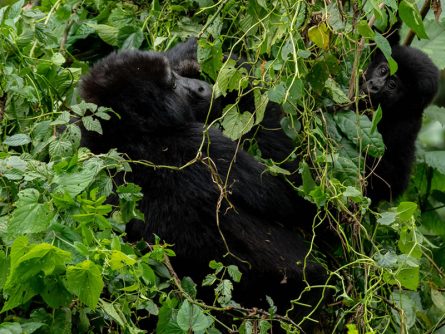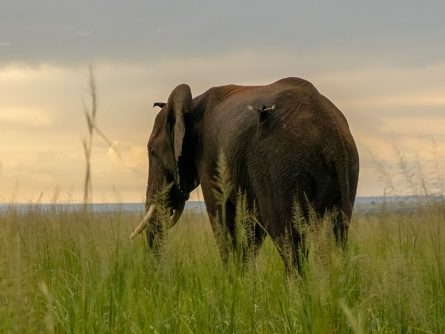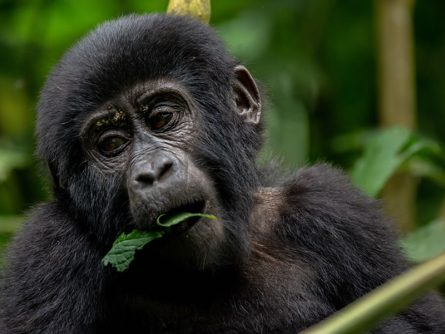Kidepo Valley National Park, located in the remote northeastern corner of Uganda, is one of Africa’s most pristine and lesser-known national parks. Spanning approximately 1,442 square kilometers, this rugged savannah park is framed by the looming Mount Morungole and bordered by the Kidepo and Narus Rivers. Its isolation contributes to its undisturbed beauty and offers a sense of untouched wilderness that is rare in today’s world.

ACTIVITIES IN KIDEPO VALLEY NATIONAL PARK
- Game Drives in Kidepo Valley National Park
Kidepo Valley National Park is renowned for its diverse and abundant wildlife, making game drives a must-do activity. The park is home to over 77 mammal species, including lions, elephants, leopards, buffaloes, zebras, giraffes, and the rare cheetah, which is not easily found in other Uganda National Parks. The park has two main game-viewing areas: the Narus Valley in the southwest and the Kidepo Valley in the northeast.
- Narus Valley:
The Narus Valley is the park's main game-viewing area due to its permanent water sources, which attract a variety of animals, especially during the dry season. It’s common to see large herds of buffalo, elephants, and other grazers here, often followed by predators like lions.
- Kidepo Valley:
The Kidepo Valley is more remote and less frequented by tourists. Although it has fewer animals than the Narus Valley, it offers spectacular landscapes and the opportunity to see the dry Kidepo River bed, which transforms into a sandy passage. Ostriches, a rare sight in Uganda, can often be seen here.
Game drives are typically conducted in the early morning or late afternoon when the animals are most active. A guided game drive provides deeper insights into the park’s ecology, and many lodges in the park offer guided drives.
- Nature Walks and Hiking in Kidepo Valley National Park
For those who prefer to explore on foot, Kidepo offers several walking safari opportunities. Walking through the park gives you an intimate connection with the environment and allows you to observe smaller wildlife and plants that might be missed during a game drive.
- Narus Valley Nature Walks:
Guided nature walks are common in the Narus Valley, where you can explore the savannah, rocky outcrops, and surrounding forests. You might encounter elephants, buffaloes, and numerous bird species during these walks.
- Mount Morungole Hiking:
One of the most challenging yet rewarding hikes in Kidepo is the trek up Mount Morungole, which rises to about 2,750 meters above sea level. This hike offers stunning panoramic views of the park and the surrounding Karamoja region. It also provides a unique cultural experience as it takes you through the territory of the Ik people, one of Uganda’s smallest ethnic groups.
- Bird Watching in Kidepo Valley National Park
Kidepo Valley National Park is a bird watcher’s paradise, with over 475 bird species recorded. The park is especially known for its raptors, with 58 species present, including the Verreaux’s eagle, pygmy falcon, and the Egyptian vulture. The park also hosts several species that are endemic to the region, such as the Karamoja apalis and the Kori bustard.
Best Birding Spots in Kidepo Valley National Park:
The Narus Valley, with its diverse habitats, is a prime birding area. The wetlands and savannah are home to a variety of species, including the Abyssinian roller, purple heron, and African swallow-tailed kite. The Kidepo Valley, with its drier landscapes, is ideal for spotting the ostrich and other desert species.
Bird watching can be done year-round, but the best time is during the dry season when birds congregate around the remaining water sources.
- Cultural Encounters in Kidepo Valley National Park
Kidepo’s location in the Karamoja region allows visitors to experience the rich cultural heritage of the local communities, including the Karamojong and the Ik.
- Karamojong Community Visits:
The Karamojong are a pastoralist people with a culture similar to the Maasai of Kenya. Visiting a Karamojong manyatta (homestead) gives you insight into their traditional way of life, including cattle herding, dance, and the making of crafts. Engaging with the Karamojong offers a deeper understanding of their social structure, beliefs, and resilience in this arid region.
- The Ik People:
A visit to the Ik people, who live on the slopes of Mount Morungole, offers a unique cultural experience. The Ik are a small and isolated ethnic group known for their distinct language and traditions. Their lifestyle, which differs significantly from that of their Karamojong neighbors, is a fascinating study in adaptation and survival in harsh conditions.
- Hot Springs Visit in Kidepo Valley National Park
The Kanangorok Hot Springs, located in the Kidepo Valley near the South Sudan border, is another attraction in the park. Though the springs are not large, the journey to reach them is an adventure in itself, offering spectacular views of the valley and the surrounding mountains. The hot springs are believed to have healing properties, and the area around them is a great place to spot wildlife, particularly birds.
- Camping at the Kidepo Valley National Park
For a more immersive experience, consider camping in the park. There are several designated campsites, both in the Narus and Kidepo Valleys, where you can pitch a tent and spend the night under the African sky. Camping in Kidepo offers an authentic wilderness experience, with the sounds of the wild all around you. It's advisable to camp with a guide or ranger due to the presence of large predators.
- Visit to the Apoka Tourism Centre
The Apoka Tourism Centre is the park's main administrative and visitor center. It’s a good place to start your visit. Here, you can find information about the park, hire guides, book game drives, and even purchase some basic supplies. The center also has a small lodge and restaurant, offering accommodation and meals for visitors.
- Star Gazing at Kidepo Valley National Park
Given its remote location and minimal light pollution, Kidepo Valley National Park offers some of the best stargazing opportunities in Uganda. The clear night skies, particularly during the dry season, are perfect for viewing constellations, the Milky Way, and sometimes even shooting stars. This activity is best enjoyed during a camping trip or from the comfort of your lodge’s outdoor areas.
Photography in Kidepo Valley National Park
Kidepo’s dramatic landscapes, diverse wildlife, and cultural richness make it a photographer’s dream. The park’s varied topography—from the rolling savannah plains to the rugged mountains—provides stunning backdrops for wildlife photography. Early morning and late afternoon light create beautiful conditions for capturing the park’s beauty.
Best Photography Spots: The Narus Valley is excellent for capturing wildlife against the backdrop of distant mountains. The park, with its vast, open landscapes and occasional wildlife, offers unique opportunities for landscape photography. Don’t miss the chance to photograph the iconic Borassus palms in the Kidepo Valley.
Community Tourism Initiatives
Supporting local community tourism initiatives is a great way to contribute to the conservation of the park and the well-being of the surrounding communities. Various community projects in the Karamoja region offer guided tours, cultural performances, and the sale of traditional crafts. These initiatives provide alternative livelihoods for the locals and reduce pressure on the park’s resources.
Best Time to Visit Kidepo Valley National Park
The best time to visit Kidepo Valley National Park is during the dry season, from September to March, when wildlife is more easily seen around water sources. The wet season, from April to August, brings lush green landscapes and a greater diversity of birdlife, but wildlife can be more dispersed.
Accommodation in Kidepo Valley National Park
Kidepo offers a range of accommodation options, from luxury lodges like Apoka Safari Lodge to mid-range options like Kidepo Savannah Lodge and basic campsites. Lodging within the park provides the advantage of easy access to wildlife viewing areas and stunning vistas right from your doorstep.
Getting to Kidepo Valley National Park
Getting to Kidepo Valley National Park involves a bit of travel effort, but the park's remote and pristine setting makes it worthwhile. Here are the primary ways to reach Kidepo Valley National Park:
By Air
Charter Flights: The quickest way to reach Kidepo is by chartering a flight. Scheduled flights are available from Entebbe International Airport to Kidepo Airstrip, with a flight time of approximately 2 hours. This option offers stunning aerial views of the Ugandan landscape and is ideal for those looking for convenience and efficiency.
By Road
From Kampala: The drive from Kampala to Kidepo Valley National Park is approximately 600 kilometers and can take around 8-12 hours, depending on road conditions. The route involves traveling north through towns such as Gulu and Kitgum. The journey includes sections of rough and unpaved roads, so a 4x4 vehicle is recommended.
Overall, while the journey to this park may be long and adventurous, the park’s spectacular wildlife and stunning landscapes make the effort well worth it.
Kidepo Valley National Park is a hidden gem that offers an unparalleled wilderness experience. Its remoteness, diverse wildlife, dramatic landscapes, and rich cultural experiences make it a must-visit destination for adventurers and nature lovers alike.






